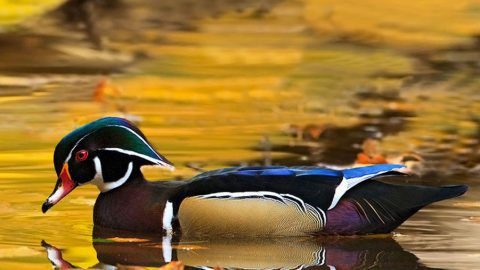View From Sapsucker Woods: Why Bird Watchers Should Buy Duck Stamps
by John Fitzpatrick
October 15, 2009
From the Autumn 2009 issue of Living Bird magazine. Subscribe now.
Waterfowl hunting season is upon us again, and this year there is a twist that involves all of us who watch and love birds, whether or not we are duck hunters. A movement is rapidly gaining traction encouraging everyone who loves wildlife and the outdoors to get to the nearest post office and buy the 2009 “Duck Stamp.”
Officially called the Migratory Bird Hunting and Conservation Stamp, and produced annually since 1934 as the official federal waterfowl-hunting license, the “Migratory Bird Stamp” (as I like call it) has become far more than a ticket to shoot. For one thing, it’s a free pass to enter any of the hundreds of National Wildlife Refuges across the United States. Much more important, of every dollar you spend buying the stamp (they still cost only $15), 98 cents will go directly to fund the purchase and restoration of wildlife habitat via the Migratory Bird Conservation Fund, administered by the U. S. Fish and Wildlife Service.
Each year the Service awards millions of dollars in grants to create or restore wildlife habitat, and it also purchases land to increase the size and ecological security of its wildlife refuges. In 2009 alone, $38 million were so allocated, and in all, more than three quarters of a billion dollars in stamp revenue have been spent to protect more than 5 million acres of migratory bird habitat.
Federal regulation of waterfowl hunting began early in the 20th century, and in 1929 the Migratory Bird Conservation Act established the mechanics by which various sources of federal dollars would be earmarked specifically for purchasing or leasing land and water. For decades, these funds were used almost exclusively to protect places where migratory waterfowl breed, stage, or winter. Without question, the original idea was to promote the long-term sustainability of an autumn waterfowl hunting season, still cherished by millions of citizens.
But times are changing, and now all conservationists—not just the hunters—should be doing their part to support this worthy, grassroots process. For one thing, although hunting is still a popular recreational pastime in much of rural America, it is definitely declining overall. The resulting loss of Migratory Bird Stamp revenue could jeopardize the continued much-needed investment in habitat protection. Secondly (and here’s where the bird-watching public comes in), the public-private joint venture partnerships around the county, which compete for these conservation dollars and administer their expenditures locally, have become staunch advocates for “all birds, all habitats.” So the stamp isn’t just about ducks anymore, it’s about protecting all manner of upland habitats, corridors, buffers, forested lands, and prairies in the United States.
Related Stories
Bird watching continues to be one of the fastest-growing recreational pastimes in North America. Yet, as we all know, many of our most beloved species are declining as a result of suburban sprawl and large-scale agriculture. Call me old fashioned, but I still believe that the most important thing we can do as conservationists to preserve and protect the best wild areas is to place the highest-priority spots under perpetual conservation management. This is precisely what the National Wildlife Refuge system was designed to accomplish, and despite all the federal budgetary strains, the system is still working spectacularly well.
I wholeheartedly applaud the recent appointment of Sam Hamilton as the new head of the U. S. Fish and Wildlife Service, long a forceful supporter of the refuge system. Let’s all do our small part to help him. Whether you call it a Duck Stamp or a Migratory Bird Stamp, please go out and buy one—or, if you can, consider buying two. I’ll be getting mine this weekend, and I won’t be pointing a gun at a duck this fall.
John Fitzpatrick
Louis Agassiz Fuertes Director

All About Birds
is a free resource
Available for everyone,
funded by donors like you
American Kestrel by Blair Dudeck / Macaulay Library






